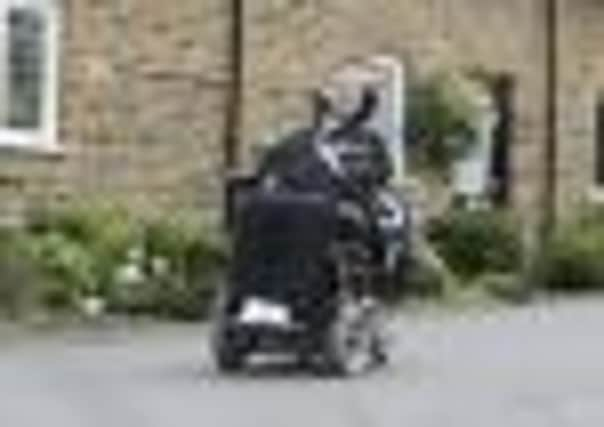Tom English: ‘Would you have the courage to go on? The bravery of these players is truly incredible’


Speed, for reasons unknown, was driven to the point of hanging himself late last month. Enke, a victim of depression, died when he stood in front of a passenger train in 2009, his story being visited in Ronald Reng’s desperately moving book, A Life Too Short, winner of this year’s prestigious William Hill Sports Book of the Year award.
There is an Irish equivalent to that prize and, on Friday, it was won by Engage, the tale of Matt Hampson’s paralysis when a scrum collapsed on him during an England U-21 training session in Northampton in 2005. Written by the Irish sports writer, Paul Kimmage, Engage is a story that is by turns heart-breaking and improbably hilarious, a story that leaves you with an awe-filled admiration for Hampson’s courage and humour in the face of his changed world. It is, in my opinion, the most inspirational story ever told by any sportsman in any country. Ever.
Advertisement
Hide AdAdvertisement
Hide AdHampson chose life, but there hasn’t been a whole lot written about him. Not really. If it wasn’t for his book he’d be little more than a statistic now, another fallen rugby player, largely ignored by the media and the sporting authorities, supported only by his family and friends and a supportive charity or two. Unfortunately, there are others who suffered a similar fate whose voices have been heard only fleetingly – or not at all. Because of Hampson we now have an idea of the kind of journey these sportsmen have had to make, their bravery, their remarkable guts in forging a new life for themselves.
Scottish rugby has numerous tragic tales to tell on this front.
Jim Taylor was only 23 when he took the weight of a falling scrum and broke his neck when playing for Kelvinside Academicals. That was 33 years ago but the memory of it is a constant. “The ball had just got thrown out across the pitch and I was just lying there,” he said, previously. “I was very lucky that one of the Old Aloysians players [the opposition on the day] was a doctor. He saved my life by not letting me get moved. The game was transferred to another pitch.” Taylor was paralysed from the neck down.
Eddie Renwick was only a boy playing for Jed Thistle when he experienced the same life-altering injury. Many have followed. In Hampson’s story we see some of what they went through, the desperation, the confusion, the fear. You try and imagine what it would be like if you were plunged into the same situation, but, of course, you cannot. Would you have the courage to go on or would you want it all to end? The bravery and acceptance and positivity of these players is truly incredible.
In 1996, Dug McArthur was left quadraplegic after an incident on the rugby field. Three years later, Struan Kerr-Liddell, 24, was left paralysed from the neck down with movement left only in his arms and in one finger after he suffered a broken neck during a game for Edinburgh club Lismore’s second XV against Livingston’s second XV in October. David Azhar was only 16 when a scrum folded in on him in 2001 when playing for Glasgow’s Whitecraigs U-18 side. He was paralysed. Johnny Mitchell, a 24-year-old father of two, suffered a broken neck at a collapsed scrum when playing for North Berwick in 2005. Two years later, Ciaran Pryce was playing for Cathkin High School when he was left tetraplegic. A year after that, Nick Watt, 18 suffered awful injuries playing rugby. And in 2008, a 19-year-old called Connor Docherty broke his neck and badly injured his spinal cord in a tackle when playing for St Aloyisus’ College in Glasgow. “I don’t remember too much but I think I went in for an ordinary tackle, except my head must have been in the wrong position,” he said recently. “I was out cold for a while and then in and out of consciousness.
“I don’t remember pain. I couldn’t really feel anything. I was taken away in an ambulance and then I just remember seeming to sleep a lot.”
Docherty’s is a stunning story. He has regained some feeling in his legs. Earlier this year he walked the West Highland Way for charity, a trek of 96 miles in aid of the Murrayfield Centenary Fund, which helps rugby players whose lives have been devastated by spinal injuries. He completed it with the use of a single crutch and raised £7,000.
This is not an exhaustive list. That’s another tragedy. There will be others. Others who chose life and not death. This is not to make a moralistic judgment on anybody who can’t find a way to deal with their own personal traumas. God, no. Rather it is an attempt to highlight the remarkable people who find a way through the horror. People we hear too little about. We see amazing things on the rugby field from time to time, but the spirit of Hampson and those who went before him and will come after him is something that is both chilling and enormously uplifting.